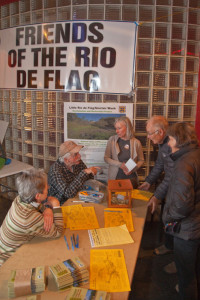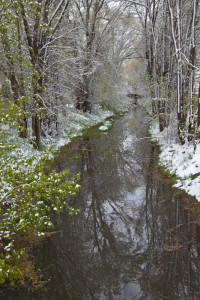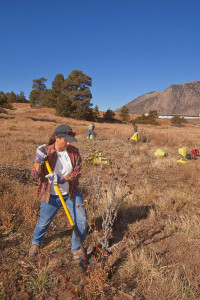The Friends of the Rio de Flag (FoRio) are individuals and organizations that support preserving and restoring the natural beauty and beneficial functions of the Rio de Flag stream channel.
What we do:
FoRio promotes the Rio de Flag’s natural stream system as a unique and valuable natural resource, an asset, and an amenity to the City of Flagstaff and the surrounding community.
FoRio promotes the preservation and rehabilitation of all parts of the Rio de Flag and its tributary streams with particular emphasis on sections of the channels that have been disturbed, under-grounded or abandoned.
*Riparian habitats are water-dependent ecosystems characterized by rich and diverse groups of plants and animals. A vanishingly rare community resource for Flagstaff, riparian ecosystems play a key role in reducing flood peaks, enhancing water quality and groundwater replenishment, and providing wildlife habitat, open space, and recreational opportunities.
Interests and activities:
- Public Education about rivers, streams, watersheds, riparian areas
- Clean-up and Maintenance
- Recreational Activities
- Public Information Services/Outreach
- Wildlife Observation
- Riparian Habitat Protection and Preservation
- Riparian Restoration Planning and Implementation
- Special projects or specific areas or reaches of the Rio or its tributaries that the FoRio support can be found by visiting our Projects and Discover pages.
MEMBER MEETINGS
The Friends of the Rio de Flag is a 501(c)(3) nonprofit organization whose goal is to protect, restore, clean up, and improve the Rio de Flag and its tributaries to maximize their beauty, educational, recreational, and natural resource values, including the riparian habitats* they provide.
When: 6:00 pm on the first Thursday of each month
Where: Montoya Community Center in Flagstaff, Arizona
All meetings are free and open to the public!
Update: After Covid meetings have resumed in person, but a Zoom option is available to those unable to attend in person.



